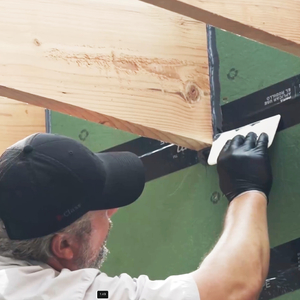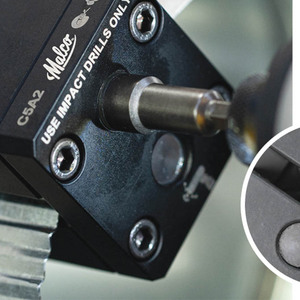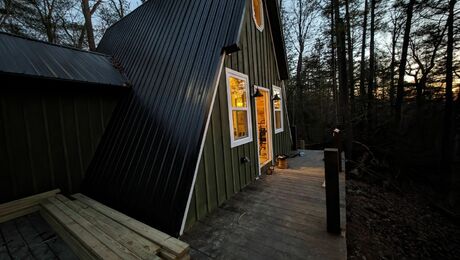A Not So Big anniversary
It has been 10 years since The Taunton Press first published architect Sarah Susanka’s book The Not So Big House, the company’s best-selling book of all time. Since then, Sarah has written a half-dozen other books on home design and has delivered hundreds of lectures. She started a movement in home design, and her message has been consistent: We need to build homes tailored to the way we really live—better houses, not bigger ones. Unfortunately, in that same time, the size of the average new home in this country has grown from 2170 sq. ft. to 2479 sq. ft. Will we never learn?
Of course, 10 years ago, the price of gasoline was $1.03 per gallon, and electricity and fuel oil were similarly cheap. Ten years ago, few of us had heard of global warming, and even fewer cared. Ten years ago, the inconvenient truth was that Bill Clinton had lied about his affair with Monica Lewinsky. Well, a lot has changed in 10 years. Maybe we’re finally ready to build smaller houses, if for no other reason than that they’ll be cheaper to heat and cool.
In celebration of the 10th anniversary of The Not So Big House, Taunton has published an updated edition that includes a new introduction, a new chapter, and three new house projects. To learn more or to order a copy, go to www.taunton.com. Here’s hoping the average size of new homes finally starts going down.
—Kevin Ireton, editor
Air-sealing windows prevents water leaks
Rob Moody did a great job in his article on window flashing (FHB #197). In my experience, few contractors have any idea how to handle these critical details. There are a couple of points that bear expansion, though.
First, the article didn’t mention one of the key benefits of sealing the window to the framing with expanding foam. Unlike fiberglass, foam creates an effective air seal, so any space between it and the outside will be at the same atmospheric pressure as the outdoors, which helps to keep out winddriven rain. Air can blow right through fiberglass, and particularly in coastal applications, that air is likely to be carrying a fair amount of water.
However, foaming around some vinyl windows voids the window manufacturer’s warranty. In that case, one solution is to seal the window jamb to the framing with backer rod and a high-quality caulk. The entire space doesn’t need to be filled; you simply need to create an effective air seal.
—Andy Engel, Roxbury, Conn.
Debating liquid flashing
In his article, Rob Moody states that housewrap, flashing tape, and a sill pan are absolutely necessary for watertight window flashing. I disagree. There are several systems available that don’t use any of these materials while offering superior performance.
One system is called Wet-Flash (www.wet-flash.com), which uses elastomeric liquid and sealant. Wet-Flash has passed the water-penetration resistance test (ASTM E 331), which simulates wind-driven rain (49 mph, 8 in. of rainfall per hour for five hours). Try that with housewrap and tape.
—Lee Hitchcox, San Rafael, Calif.
Author Rob Moody replies: Thanks for letting me know about this product. I looked at Wet-Flash and its installation instructions. While the product seems to have several positive attributes, it doesn’t meet one of my critical requirements. Because Wet-Flash is applied directly to the sheathing prior to window installation, it doesn’t allow for the shingle-style lapping of flashing around the window (or any other penetration for that matter).
Now that’s thick paint
In his article “Factory-Finished Siding”(FHB #197), John Ross says that “close monitoring ensures that an even 6-mm layer of paint is applied…” Is he serious, or is this a typo? Six millimeters is close to 1⁄4 in. No wonder they can offer a 25-year warranty!
—Bil Houghton, Sebastopol, Calif.
Associate Web editor John Ross replies: Yikes! We meant to say 6 mil, which is 0.006 in.
Kudos for green
I just wanted to offer kudos for the “Green Comparison” sidebar to the “Factory-Finished Siding” article. As someone whose first question when reading about a new product or technique is always “How sustainable/green is this?” I’d love to see Alex Wilson’s commentaries associated with pretty much every article you publish.
—Eric Woodhouse, via email
Silica dust is dangerous
Your article “Factory-Finished Siding” includes a “green comparison” of cedar versus fiber-cement board, but fails to mention the health risks of working with fiber cement.
Due to the potential for serious problems from inhaling silica dust, which include, in the short term, gastrointestinal irritation or bleeding, and in the longer term, silicosis and lung cancer, James Hardie recommends scoring and snapping the planks and not cutting them with a saw unless the saw is hooked to a HEPA vacuum. These approaches are fine for installing the siding, but do not work for the electrician, plumber, and HVAC workers who must bore holes in the siding once it is in place. For now, their only option is to use a hole cutter like those from Hole Pro (www.holepro.com), which are equipped with protective dust-tight shields.
—Bruce Stenman, via email
The editor replies: Thanks for reminding us about the dangers of silica dust. In all fairness, though, it should be noted that wood dust in general is a known human carcinogen and that sawdust from western red cedar can lead to rhinitis, dermatitis, and asthma. No dust is good for us to breathe, so we should all be wearing respirators more often.
Mea culpa cover
Several readers chastised us for the cover photo on our August/September issue. It shows Scott Grice, an Oregon builder, installing fiber-cement siding with a conspicuously unpainted end cut on a piece of exterior window casing. The fault is ours, not Scott’s. Our presence on a job site, especially for a cover shoot, tends to disrupt the normal sequence of work. Living as he does in the Pacific Northwest, Scott knows the value of sealing end grain and does so before installing siding.
—The editor






















